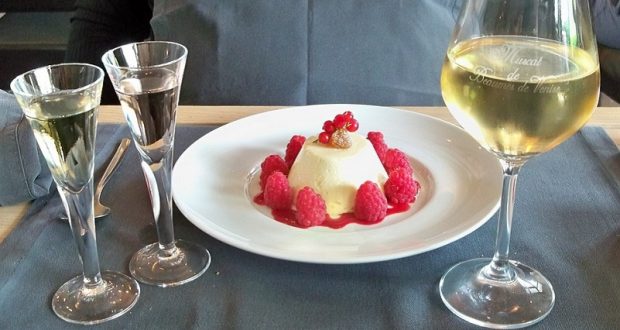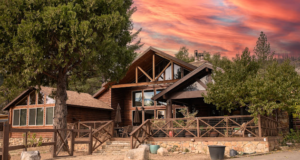By Karen and Ken Geiszler, Winery-Sage.com —
It’s the “final course” of our Holiday Food & Wine Pairing blog feature. After helping educate readers on general wine pairing tips, and specifics on pairing with appetizer dishes and main courses, we’re now ready to bring it all home with everyone’s favorite topic … Desserts!
Depending on your sweet tooth, this is either the finishing touch to a great meal or the heroic climax to which the rest of the meal was just a prelude. I fall into the light component although Karen strongly feels that a Holiday meal includes the dessert as the most important part of the repast.
Desserts are the most difficult to pair with wines. There is a finite list of wines that really shine as a compliment to dessert. I think matching sweetness of the dessert and the wine is the hardest part of planning a meal.
General Rules for Pairing Desserts with Wines
- When serving any courses, follow the general guidelines in part one of our post Holiday Wine and Food Pairing blog post.
- Try to match the sweetness of the wine to the sweetness of the dessert. In other words, don’t have a wine that is big, bold, and tannic with a sweet dessert. If you have to choose, choose a wine that is slightly sweeter than your dessert.
- If you are going to serve a very sweet dessert, forego serving wine with it and wait until you are serving coffee and bring out a great dessert wine after.
- Frozen desserts like ice cream or sorbet will numb your taste buds, so wait to serve your wine until after the dessert.
- Pair darker, intense desserts with darker, intense wines like Ports or late Harvest Zinfandel or something similar.
- Desserts vary more than almost every other type of food. Whereas lamb usually tastes pretty much like lamb however it’s prepared, something like apple pie can be very sweet to slightly tart. The range of ice creams, sorbets, cakes, puddings, and cookies makes a brief suggestion section impossible, so we’ve just described the types of wines that typically go well with desserts and you can choose what you think best compliments your offerings.
- Note that especially with dessert pairings, these are guidelines at best. If you find a combination that you like, go for it. Just remember that every one’s tastes vary. In other words, if you have tastes that seem out of the ordinary, remember that your guests may be a little more conventional.
Well Known Wines for Pairing with Desserts*
Below is a list of the well known wines which pair with desserts. Each is separated for easy viewing, with additional information on the wine, and links are provided to different locations or select wineries where the wines can be found. As mentioned, when considering one of the wines, think about what dessert you will be serving and how the sweetness of the dessert will pair with the wine below.
*The Western US is not well known for many of the types of wines listed above so finding them at a local winery is highly unlikely and a trip to a large wine retailer is likely your best bet.
Moscato d’Asti and Other Sparkling Wines
Sparkling wines are palate cleaners. They are great in providing a segue into dessert. They do particularly well with fruit desserts and sorbets providing they are not too sweet. There are also a number of sparkling wines that are flavored with other fruit or nut flavors.
Ice Wines
Ice Wines are made from grapes that are left on the vine for the first freeze. The water in the grapes freezes but the sugars and acid compounds don’t. Harvesting and pressing while the grapes are still frozen so less water is pressed from the grape. The result – a strong, intense concentration of sweet fruit flavor but with enough acid to provide and interesting balance. They can be quite expensive due to the process involved and the relatively small amount of juice obtained from the fruit. Ice Wines are almost always created from white varietals.
Sauternes (and other Botrytis affected wines)
Botrytis (or Noble rot) is a fungus that affects some grapes in semi moist conditions. The affect is similar to that produced by with Ice Wines. The fungus leeches much of the water out of the grape leaving the sugars and acids behind. Like Ice Wines, they can be quite expensive. Sauternes are created from White wine grapes.
Late Harvest Wines
“Late Harvest” is an apt description for this type of wine. The fruit is left on the vine to continue to ripen producing heavy sugar content and typically lower acids. The more prevalent sugars are not all converted to alcohol during fermentation, resulting a sweeter dessert wine. Late harvest wines can be created from any Varietal grown in warmer regions with a long growing season.
Ports (and Other Fortified Wines)
Port Wines (technically Port is now a trademarked name and can only be used to describe wines from the Douro Valley in Portugal or from other wineries using the term “Port” before March 10th, 2006). Fortified wines are generally made with the same techniques as normal wines although timing for fermentation and containers may differ. Once basic fermentation is completed, stronger liquor like brandy is added to the wine. The majority of fortified wines are made with mostly Red Varietals but some white ones may be blended in as well. Wines can also be fortified with other components like Coffee or Chocolate.
There are two local wineries that specialize in making fortified or dessert wines, Ficklin Vineyards and Quady Winery, both in Madera. We’ve included a link to a post we did several years ago to them.
Happy drinking! — Karen and Ken Geiszler, Winery-Sage.com
Winery-Sage is an online Winery Encyclopedia designed to help you compare wines, wineries, and regions by using a unique database. Cross-reference varietals and the wineries that produce them, as well as discover events sponsored by wineries and associations. We’re not here to sell you anything or pass you off to paid advertisers, just share the love for wine. Discover California wines at Winery-Sage.com
Karen and Ken have now been married for almost 25 years and to date have still not had a fight since being married, probably because Karen has the patience of a saint. They live in the Silicon Valley area but have had a cabin just south of Yosemite, in the Bass lake area, for roughly 13 years. They spend as much time up here as they can. The first 10 years was just relaxation. The last three has been lots of work recovering from damage caused by the Courtney Fire and then continuing on with a remodel. In 2018, they hope to spend as much as a third of their time up at the cabin.
They are now empty-nesters with their older son being married and living in London with his new wife for the next two years, and the younger one living in Ann Arbor, Michigan, getting his PhD in Bioinformatics. From where he got the brains is a complete mystery but the best guess is the dog. They are not sure what they did to drive their kids so far away but the only consolation is that both sons claim to want to move back in the future.



